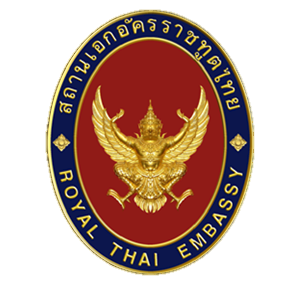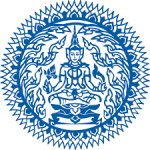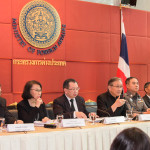
On 19 January 2016, the Ministry of Foreign Affairs submitted Thailand’s Trafficking in Persons Report 2015 to the US Department of State. The report documents the Royal Thai Government’s “zero tolerance for human trafficking” policy and its endeavors to solve this particular issue by focusing on nine key objectives: (1) Rule of law (2) Anti complicity and corruption (3) Expedition of human trafficking cases (4) Effectiveness of frontline operations (5) Reduction of risks for vulnerable groups (6) Improved victim and witness protection (7) Integrated efforts against child exploitation (8) Enhanced partnership and (9) Public awareness and outreach. Further details on Thailand’s initiatives to combat human trafficking are also described under 5P’s strategy; namely, Policy, Prosecution, Protection, Prevention and Partnership as follows:
1. Policy Implementation
Since 2014 government efforts have been primarily geared towards reforming legal frameworks and restructuring operational mechanisms to better address trafficking in persons, with an aim to translate this policy directive into concrete outcomes. A number of pieces of legislation and amended ministerial orders have now been passed with more severe penalties for convicted offenders and also to better protect victims; for instance, the amended Anti-Human Trafficking Act 2015, the new Royal Ordinance on Fisheries B.E. 2558 (2015) and the Anti-Money Laundering Act B.E. 2558 (2015). Other key progress includes drafting a new “Human Trafficking Criminal Procedure Act” that will institute a number of key procedural measures to make the adjudication process less burdensome for victims;
2. Prosecution
The government has shifted its approach to a proactive, intelligence-led enforcement model and greater coordination with domestic and international partners. As a result, in 2015, the number of cases investigated, suspects arrested and victims identified have all significantly increased from 2014 by 13 percent, 33 percent and 35.7 percent respectively. Specialized units were set up within the Criminal Court and the Office of Attorney General to expedite and further enhance the efficacy of the country’s criminal justice system, rendering Thailand the first country in Southeast Asia to have specialized anti trafficking agencies in every step of the criminal justice process. Criminal and disciplinary actions were also taken against 29 officials who were complicit in trafficking in persons;
3. Protection
The victim identification form underwent major improvement, taking into consideration recommendations from stakeholders. The improved VI form is currently in use by multi-disciplinary teams nationwide. This form provides guidance to officials about the kind of information necessary to make an accurate determination and to serve as a source of data to monitor official performance. The government has sought to provide better assistance incentives both to the witnesses and victims in testifying in court. In addition to an increase by 55 percent of the protected victims in shelters, the quality of victim care and services was improved with more interpreters, specialized care for women and child victims, and effective remedies for the victims;
4. Prevention
The government has continued to regularize undocumented migrant workers so that they are entitled to legal protection. As of 2015, 2.5 million workers, including those in the fishery sector, were registered. Measures were also taken to reduce the risk of other vulnerable groups. For instance, 20,688 members of stateless persons, ethnic minorities and highland people were granted Thai nationality, enabling them to seek employment without fear of being exploited or becoming victims of trafficking. At a regional level, Thailand has undertaken a proactive initiative in organizing two Special Meetings with a view to mobilizing international cooperation to better address irregular migration at its root causes. At one of these Meetings, Thailand pledged 100,000 USD to contribute to a regional information campaign to promote safe migration in addition to its contribution of about 300,000 USD in 2015 for development projects in Rakhine State. Coupled with stronger law enforcement, Thailand’s actions resulted in a significant drop in irregular migrants, earning praise from UNHCR and other human rights organizations;
5. Partnership
Recognizing that human trafficking cannot be solved by the Thai government alone, the government has deepened and broadened its partnerships with foreign governments, the private sector, a number of international organizations and civil society organizations both in and outside Thailand. The government has finalized and revised a significant number of bilateral MOUs with key strategic countries to better regularize migrant workers coming to work in Thailand and to also significantly reduce the possibility of labor trafficking victims. In addition, all relevant stakeholders agreed to set up the Public-Private-Civil Society Partnership (PPCP) Working Group to collectively address issues such as supply chain transparency, trafficked women and children, and victim protection and welfare;
In conclusion, the year 2015 has been a pivotal year in the Royal Thai Government’s ongoing drive to radically reform Thailand’s anti-human trafficking efforts. Thailand reaffirms its strong commitment to further combat the scourge of human trafficking by strengthening its 5P’s strategy. The aim is not just in terms of delivering immediate results to send a strong signal to the perpetrators but also to create an environment where change is likely to be sustainable through promoting greater public confidence in our national efforts to fight against human trafficking and also through closer cooperation with our partners both domestically and internationally.
Source: Ministry of Foreign Affairs



